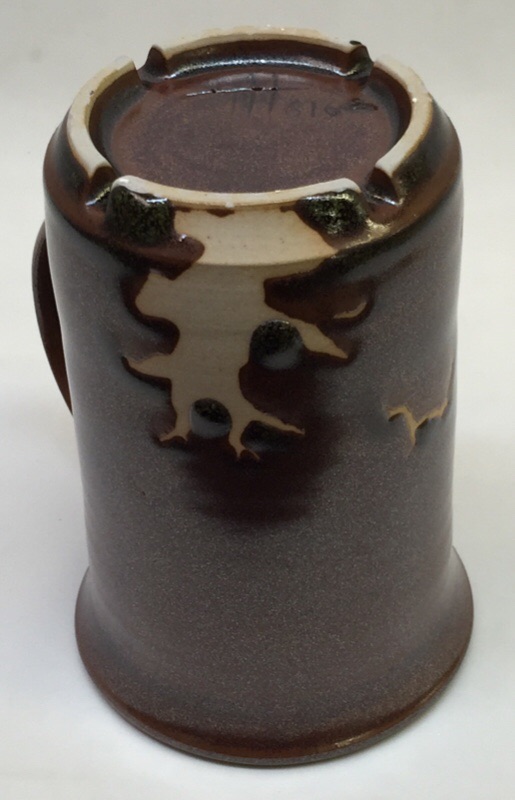| Monthly Tech-Tip |
|
GR10-L - Ravenscrag Iron Crystal
Modified: 2023-09-19 22:34:34
Plainsman Cone 10R Ravenscrag Slip based glaze. It can be found among others at http://ravenscrag.com.
| Material | Amount |
|---|---|
| Ravenscrag Slip 1000F Roast | 0.00 |
| Ravenscrag Slip | 100.00 |
| Added | |
| Red Iron Oxide | 10.00 |
| 110.00 | |
Notes
Without any added flux Ravenscrag will produce an iron crystal surface with 10% iron oxide.
Related Information
An iron crystal glaze on a buff stoneware at cone 10R

This picture has its own page with more detail, click here to see it.
This iron crystal glaze is Ravenscrag slip plus 10% iron oxide fired to cone 10R on Plainsman H550. Since Ravenscrag slip is a glaze-by-itself at cone 10, it is an ideal base from which to make a wide range of glazes.
Fixing a crawling problem with Ravenscrag Tenmoku

This picture has its own page with more detail, click here to see it.
Crawling of a cone 10R Ravenscrag Slip iron crystal glaze. The added iron oxide flocculates the slurry raising the water content, increasing the drying shrinkage. To solve this problem you can calcine part of the Ravenscrag Slip, that reduces the shrinkage.
A cone 10R iron crystal glaze using only Ravenscrag Slip and Iron

This picture has its own page with more detail, click here to see it.
Ravenscrag Slip, by itself, produces a silky transparent glaze at cone 10R. It is an excellent base to which to add colorants and modifiers. This is a simple addition of 10% iron oxide (Ravenscrag Slip already contains 2% iron, making about 12% total Fe2O3). This GR10-L recipe produces a stunning crystalline fired surface on these two porcelains. This "beyond-tenmoku" effect happens because of the extra iron and a slow cooling rate. The 12% iron dissolves in the glaze melt during heat up in the firing, but during cooling, the extra 2% precipitates out to produce these surfaces. The iron also acts as a flux in reduction firing, greatly increasing melt fluidity. Take that last statement seriously: The iron is a flux and the glaze will melt much more (it can wreck your kiln shelves if it runs). That being said, Ravenscrag Slip is more melt-stable than other bases, making it a more stable host for the iron addition.
Links
| Recipes |
GR10-K1 - Ravenscrag Cone 10R Tenmoku
Plainsman Cone 10R Ravenscrag Slip based glaze. It can be found among others at http://ravenscrag.com. |
XML to Paste Into Desktop Insight
<recipes>XML not functional: We are working on this problem.</recipes>
| By Tony Hansen Follow me on        |  |
Got a Question?
Buy me a coffee and we can talk

https://digitalfire.com, All Rights Reserved
Privacy Policy
 Use Plainsman Clays?
Use Plainsman Clays? 